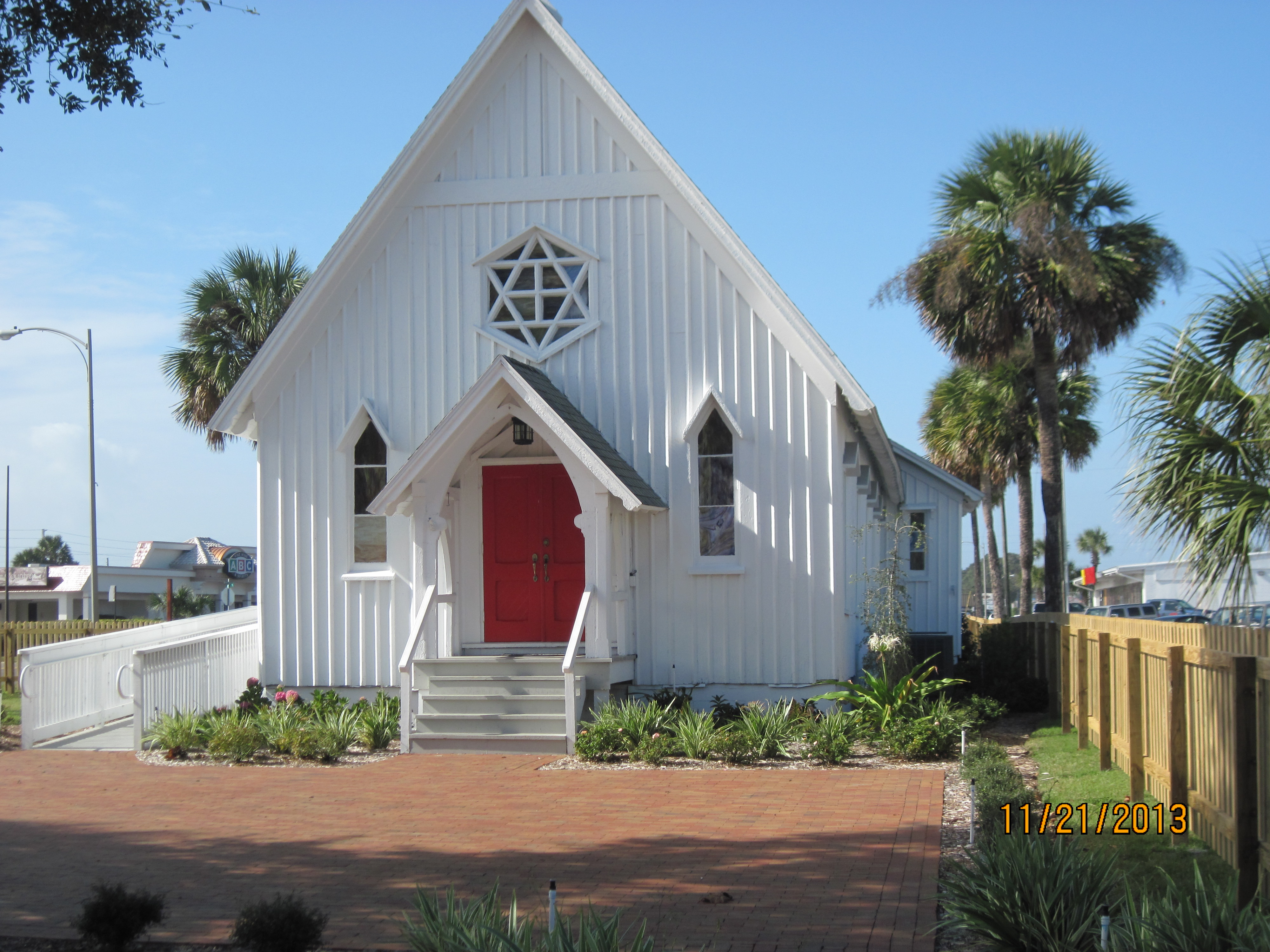St. Paul’s By the Sea Chapel is just one of the great things at the Beaches Museum-Photo by Rose Hammitt

Florida’s Jacksonville Beach has a bit of history and the best way to learn about it is at the Beach Museum. The museum and outbuildings that go with it, like the beautiful Beaches Chapel in the photo is a nice walk from the historic Casa Marina Hotel where my friend Rose and I stayed during our visit. At the Beaches Museum where we had the unique opportunity to interview Maarten van de Guchte, Ph.D., the museum’s Executive Director.
Dr. van de Gutche offered an overview, a history of Jacksonville Beach. “Our mission is to research and do exhibits of the beaches history. This (Jacksonville Beach) is a barrier island. East is the Atlantic, north the St. John’s River, West the Intercoastal and South the Tolomato River. To get here, you have to cross one of seven bridges or take a ferry.”
He told us about the Timucan Indians that had lived in Florida when Ponce de Leon the first European to set foot in the New World arrived. We heard about the French landing and setting up Fort Caroline and then how the Spanish came and destroyed the French settlement. The Spanish leader Pedro Menendez then went on to establish St. Augustine before the British arrived. The Spanish influence changed the face of Florida forever with the introduction of cattle and citrus. They raised sheep, pigs, ducks and cotton, sugar and indigo. Together the Indians, French, Spanish and British made northern Florida into a melting pot of culture and history. The arrival of the railroad then again changed the face of North Florida. It was this time period that much of the Beaches Museum focused on.
Dr. van de Gutche said, “All buildings are associated with the Mayport Florida East Coast Rail Road; FEC that was founded by Henry Flagler who made his money with Standard Oil then infused it into railroads and hotels all the way to Key West.”
Dr. van de Gutche’s overview provided a basis that placed everything afterward that we saw and heard in perspective. The Beaches Museum offers insight into this history in the two acres where it is located. “The museum building has six buildings, the central museum, the old post office, and the depot and train enclosure and the chapel.”
Museum tour guide Holly Hamrick said that the depot on display was the Mayport Depot originally located a few blocks away. Inside the depot is Morse code machines, a message board that was held out for the engineers on the traveling train to see. The depot even sported an advanced intercom system.
The train enclosure Dr. van de Gutche said holds, “A 1911 wood burning steam engine.”
Holly Hamrick added the 1911 train was used for logging. “It took three staff to run this,” Hamrick said. “The engine had two-wheels in front, six in the middle then none under the cab; it was called a 2-6-2 train.”
The museum post office was built in 1903. “Many of the early post offices had post mistresses,” Hamrick added.
This particular post office also information about a rare occurrence. “In 1959,” Hamrick said, “a submarine off the coast shot a container of mail to Mayport as an experiment. It was the first missile to mail!”
There is also the Foreman’s House, which was built in 1903. “Like cracker houses, the windows were on either side. The train foreman and his family ran the depot,” Hamrick shared. “There was no running water or electricity until 1933.”
“We also have the St. Paul’s by the Sea Chapel that was built in 1887,” Dr. van de Gutche said adding that originally the church held Episcopalian masses three blocks from the current location.”
The chapel is designed in Carpenter Gothic which he added, “Is a very popular American architectural style which employed local artists built using local materials. It is simple, austere. It is used here for weddings and services on Sunday by a local church.”
We were fascinated by the museum, the buildings and the history. If in Jacksonville Beach take time to stop by. The museum is located at 381 Beach Boulevard, Jacksonville Beach, FL 32250. Call 904-241-5657 or log onto http://beachesmuseum.org/home.php for more information.



